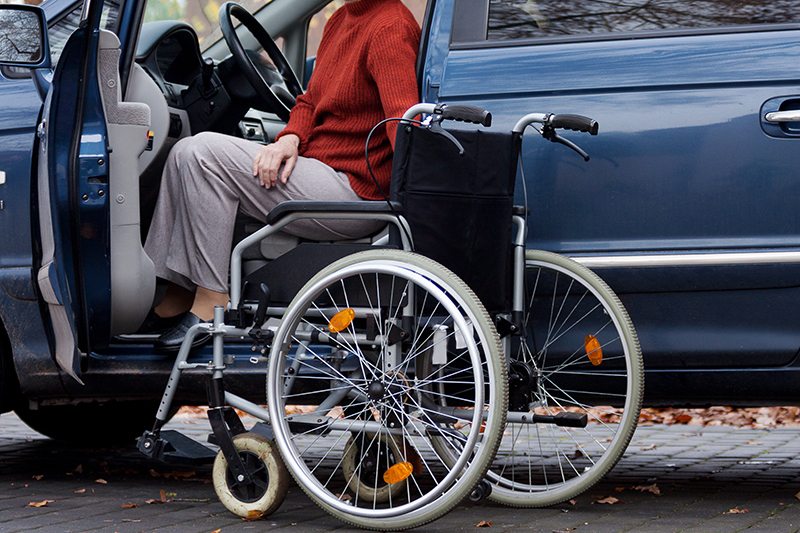
This column was originally published as part of my “From Where I Sit” series at in Towson Times.
I hadn’t made a left turn in 12 years.
But when my 16-year-old son learned how to drive a stick shift, my competitive juices fired-up my resolve. I decided it was time to master the art of driving with only my hands.
Many paraplegics learn to drive soon after their injury or illness. Eighteen months after my paralyzing event, Transverse Myelitis — a rare inflammation of the spinal cord that began with a common cold — I took driver’s training and received my license.
But for years, my van’s hand controls just sat there, winking at me, taunting me with one thing I refused to do: drive.
The adaptation is simple. A spinner knob on the steering wheel enables the driver to maneuver the vehicle with one hand while another lever to the left of the steering column controls the gas and brake pedals. Push it to stop; pull it to go.
I knew how to do it. I just wouldn’t.
For 12 years, friends, family, and caregivers shuttled me around. No one ever complained or challenged my decision. Perhaps they understood my fear. When something so random as a cold provokes a life-altering illness, risk-taking is elevated to a new level of consideration. I did not want to invite any more risks into my life.
Occasionally, though, folks from my spinal-cord-injury world questioned why I did not drive.
“That surprises me,” one fellow said to me as he muscled himself into his sports car’s driver seat, dismantled his wheelchair and threw it in the back seat.
Even though I had bonafide excuses, I learned to share the real reason. It was the fastest way to shut-up insensitive souls and, of course, it was the unvarnished truth.
I was scared.
Through the years, I tried to motivate myself, betting a friend I would drive before she learned how to send e-mail and teasing my daughter, now 22, that I would drive before she would.
Yet, I couldn’t sustain my resolve. I wasn’t ready to trust myself.
But as I watched my youngest hop into a jeep wrangler, eager to learn how to make that vehicle go, I marveled at his determination. Undaunted by stalls, jerky stops, and uneven starts, he soaked up every bit of his father’s instructions on how to shift gears.
His two-handed feat inspired mine.
But first, I had to quiet the mental noise that my son so easily discounted. What if I drove too slowly, pushed the wrong lever, or made a mistake? What if people honked at me?
Left turns terrified me. With limited abdominal muscles, turning left forced me to lean hard into the steering wheel knob as I turned or I would tip over, face planting into the passenger seat.
So, I practiced, as did my son, and we swapped tips.
“When merging, don’t slow down,” his driving instructor told him. “Accelerate.”
And we both learned the value of first carefully, then confidently, joining the established pace.
People still honked at me. But I chose to see it as their problem, not mine, staying focused on my objective.
And now, I am no longer scared. I am accomplished.
As we approach the New Year, I wonder what other fears are worth facing for the accomplishments they will bring. What risks are worth inviting into our world?
Perhaps when we try something new, we should go carefully, yet confidently, discounting others’ ignorance, and trust ourselves to sustain our resolve.
Follow Me!